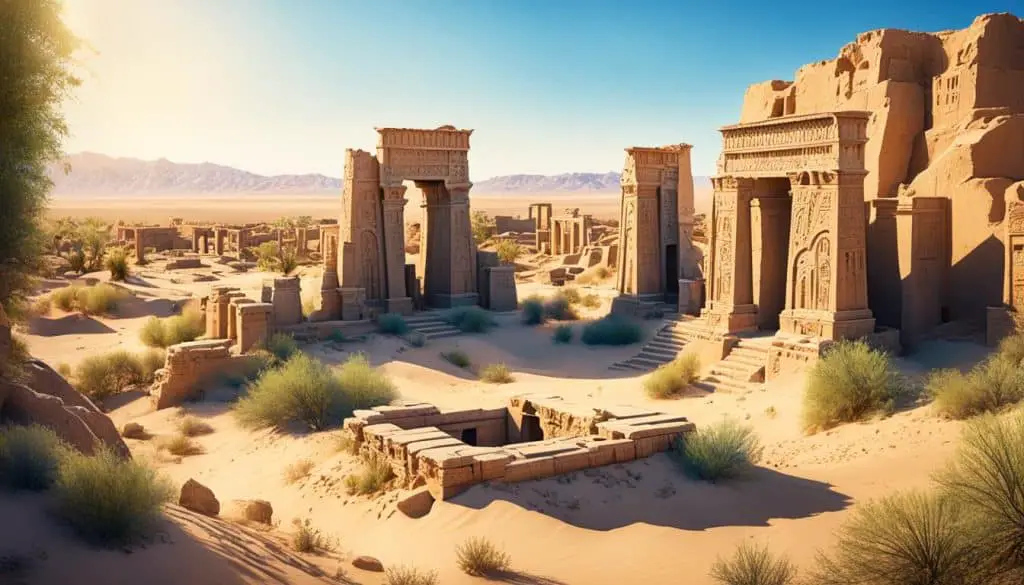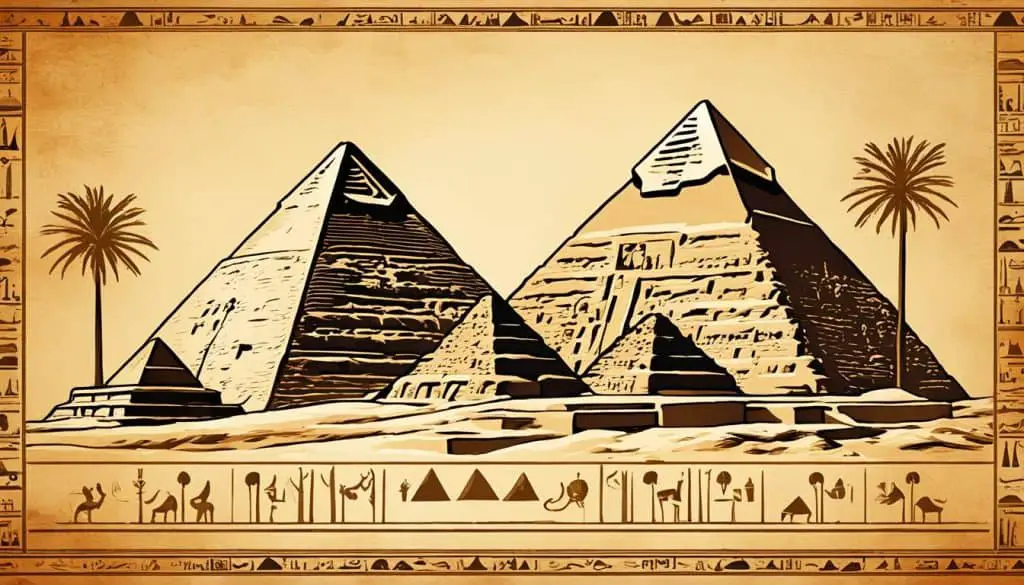Table of Contents
When we think about the Bible, stories and teachings come to mind. They have deeply influenced our faith and culture. But, did you know there is a variety of languages in the Bible? This includes languages like Parthian and Arabian.
So, what foreign languages were spoken in biblical times? And how did they shape the beloved stories in the Bible? Join us on a journey to explore the many languages of ancient biblical times. We’ll discover some fascinating new insights along the way.
Prepare yourself for a fascinating journey into the Bible’s history and its languages. We will find out how biblical tales are tied to languages like Parthian and Arabian. You’ll also uncover valuable insights waiting in the ancient texts.
You’re about to see the rich diversity of languages in biblical times. Are you ready to explore this amazing linguistic adventure with us?
The Parthian Language
Acts 2:9 talks about the Parthians who were at Pentecost. They heard the apostles in their own languages. The Parthian language was used in Parthia, an ancient empire in the Meso region.
The Parthians were part of the Parthian Empire. They were known for their strong armies and cultural influence. Their language was important in the Near East’s linguistic scene.
\”And Parthians and Medes and Elamites and people from Mesopotamia, Judea and Cappadocia, Pontus and Asia, Phrygia and Pamphylia, Egypt and the regions of Libya near Cyrene, along with visitors from Rome, both Jews and converts to Judaism, Cretans and Arabs—we hear them speaking in our own languages about the great things God has done!\” – Acts 2:9-11
The Parthian language was key for the Parthian Empire’s communication and trade. It thrived from the 3rd century BC to the 3rd century AD. This was during the Parthian era.
The Parthians were at Pentecost to witness the apostles’ miracle of speaking in different languages. This event showed the Holy Spirit’s power and the wide reach of the Gospel.
Today, the Parthian language is no longer spoken. But its role in linking eastern and western empires stays important. It influenced many regional languages.
Let’s look at some of the important features of Parthian:
- Parthian used a form of the Aramaic script, which was common in the Near East.
- It was an inflected language with a hard grammar. It included noun cases and verb forms.
- Even though it came from Indo-Iranian roots, Parthian’s vocabulary also had Semitic influences.
- We’ve found Parthian writings in many old objects. These findings help us understand the language and the people who used it.
Learning about the Parthian language teaches us a lot about the ancient world. It shows how diverse cultures and languages impacted history, including biblical stories.
The Mede Language
In Acts 2:9, the Medes understood the apostles during Pentecost. Their language, from the kingdom of Media next to Persia, was key.
The Medes weren’t talked about a lot in the Bible. But, their presence at Pentecost shows how many languages were spoken back then. This shows us more about the historical time and the gospel’s reach.
“The Medes, from the ancient kingdom of Media, were at Pentecost. They heard the apostles in their own language and were amazed at this miracle.”
– Acts 2:9
The Mede language is like Persian and was big in Media. This area was rich in culture and was important in the ancient Near East. Studying Mede helps us see the languages of Bible times.
Learning about ancient languages shows how vital they were in history. Knowing Mede opens a window to ancient ways of talking. It shows how cultures were linked back then.
Relevance of the Medes in Biblical Narratives
Even though the Medes aren’t major in the Bible, Acts 2:9 talks about them. It shows they were part of Pentecost, a big moment. This marked the start of spreading the gospel to many people.
At Pentecost, the apostles spoke in Medes’ language and others. This was a sign of God bringing all people together under the gospel. Salvation was meant for everyone, no matter where they came from.

The Elamite Language
The Elamites were at Pentecost, as Acts 2:9 tells us. They heard the apostles in their own language. This shows how diverse the crowd was.
They came from the ancient land of Elam, in southwest Iran. Elamites were key figures at Pentecost, mentioned in Acts 2:9. They understood the apostles despite speaking different languages.
The Elamite language was part of the Dravidian group. This ancient civilization lasted from around 2700 to 539 BCE. Susa, its capital, was known for trade and culture.
Elamite was one of the first written languages. It was found on clay tablets all over the area. This language is a window into the Elamite civilization’s rich past.
Here’s a quick look at the Elamite language:
| Language | Script | Region | Influence |
|---|---|---|---|
| Elamite | Proto-Elamite, Linear Elamite, Cuneiform | Southwest Iran (ancient Elam) | Influenced neighboring languages |
The Elamite language influenced southwest Iran’s history and culture greatly. Studying this old language reveals much about the Elamite people. It shows their role in the ancient world.
The Mesopotamian Language
Acts 2:9 mentions the Mesopotamians at Pentecost, showing the event’s many cultures. Mesopotamia lay between the Tigris and Euphrates, in places like modern-day Iraq and Iran. It was a mix of cultures and languages.
This area was a key place for early civilization. It helped develop writing, farming, and organization. Sumerian, Akkadian, and other languages were spoken over time. We can’t know exactly which the Mesopotamians spoke at Pentecost. But their being there shows how varied languages were even then.
“The land between rivers was a hub of cultural exchange and trade, attracting people from near and far. The Mesopotamians were witness to the miraculous events of Pentecost, showing unity despite their different languages.”
Mesopotamia appears in other Bible stories too. For instance, Abraham came from Ur in Mesopotamia. Also, the Babylonian captivity was here. This was the exile of the Israelites to Babylon.
The Meopotamians’ presence at Pentecost teaches us. It helps us see the vast mix of people there, when the Holy Spirit came. This mix enriches how we view the culture and languages of early Christians.

The Rich Heritage of Mesopotamia
Mesopotamia was more than its languages. It was home to Sumerian and Babylonian civilizations. These brought great architecture, science, and literature.
“From the majestic ziggurats and royal palaces to the development of the earliest legal codes and mathematical concepts, the contributions of Mesopotamia have shaped the course of human history.”
Its myths and beliefs also influenced nearby civilizations. This impacted spiritual thoughts and practices.
The Cultural Exchange in Mesopotamia
Mesopotamia was a center for culture between the rivers. It connected East and West, promoting trade and learning. This led to progress in math, astronomy, and stories.
Scholars made advances for later generations. They helped shape the ancient world’s thinking.
The Enduring Legacy
The Mesopotamian influence lives on in history. Their artifacts and buildings tell their story. They let us see the rich past of Mesopotamia.
Learning about the Mesopotamians and their languages enriches us. It shows how civilizations and people are connected in our world’s history.
The Egyptian Language
Genesis 41:43 shows a key moment in history. Joseph became second to Pharaoh in Egypt. This made him very important in the country. Knowing Egyptian well helped Joseph talk with Pharaoh and his people easily.
Learning the Egyptian language was vital for Joseph’s success. It helped him be a strong leader under Pharaoh. By speaking Egyptian, Joseph built strong relationships with the people. This also gave him insight into the Egyptian way of life.
“Joseph was 30 years old when he entered the service of Pharaoh king of Egypt. And Joseph went out from the presence of Pharaoh and went through all the land of Egypt.”
Joseph’s language skills were essential during his time with Pharaoh. He was able to interpret dreams and plan for tough times ahead because he could talk with the Egyptians. Being a good communicator helped Joseph lead well, acting as a bridge between Pharaoh and his people.
Understanding Egyptian wasn’t just important for Joseph himself. It shows how knowing the local language could be key in ancient societies. Being fluent could even lead to high positions and effective rule.
The Language of Power and Influence
The Egyptian language was a symbol of power in biblical times. It was crucial for navigating through society. Joseph’s ability to speak Egyptian was more than personal success – it showed how language can be used for diplomacy, ruling, and cultural mixing.
| Key Takeaways: |
|---|
| The Egyptian language played a vital role in Joseph’s rise to power as second-in-command in Egypt. |
| Joseph’s fluency in the Egyptian language facilitated effective communication with Pharaoh and the people of Egypt. |
| Language proficiency was a significant factor in Joseph’s ability to navigate the complexities of ancient Egyptian society and governance. |

The Libyan Language
Acts 2:10 talks about “Libyans” at Pentecost. These were people from Libya. They heard the apostles in their own languages.
“And visitors from Rome, both Jews and converts to Judaism; Cretans and Arabs—we hear them declaring the wonders of God in our own languages!” – Acts 2:10 (NIV)
At the Pentecost event, a mix of people gathered. They came from different places and cultures. The “Libyans” were part of this diverse group.
This shows how far the Pentecost event reached. It also shows the early Christians including everyone. Their message was open to all.
It’s likely the Libyans heard the apostles in their native language. The text suggests this was the case.
The Libyans hearing their own language was extraordinary. This showed that the Holy Spirit could connect with everyone. It also demonstrated how open the early Christian group was. They welcomed people from all places.
Linguistic and Cultural Diversity at Pentecost
Pentecost was a big deal in the Bible. It was not just about the Holy Spirit. It also showed many different languages and cultures.
At Pentecost, there were people from all over. They had their own languages and cultures. This showed unity in diversity. It was God’s way of saying he welcomes every nation.
| Language/Culture | Scripture Reference |
|---|---|
| Parthian | Acts 2:9 |
| Mede | Acts 2:9 |
| Elamite | Acts 2:9 |
| Mesopotamian | Acts 2:9 |
| Egyptian | Genesis 41:43 |
| Libyan | Acts 2:10 |
| Cretan | Acts 2:11 |
| Arabian | Acts 2:11 |
The different languages and cultures show Christianity’s openness. It welcomes people from all backgrounds.
As we look into languages in the Bible, we see something. The early Christians went beyond cultural and language differences. They shared love and hope with everyone in the world.

The Cretan Language
At Pentecost, people from various places, including Crete, came together. These Cretans were amazed because they could understand the apostles speak in their language.
“We hear them telling in our own tongues the mighty works of God!” – Acts 2:11
Crete has beautiful scenery and a diverse culture, making it special. The Cretan language was unique and helped people from Crete communicate during biblical times.
The Cretans’ presence at Pentecost shows how many people saw the miracles that day. They felt a deep connection because they could understand the message of God in their native language.
The Importance of the Cretan Language
The Cretan language linked different communities at Pentecost. It allowed the Cretans to understand the gospel. This connected believers from various places.
It also shows that using different languages is key to sharing God’s message. It unites people from all over, as seen at Pentecost.
Exploring the Beauty of Crete
Crete is known for its stunning nature and history. It has beautiful mountains and beaches, as well as ancient sites. These elements make Crete a magical place filled with stories and charm.

| Key Features of the Cretan Language | Significance |
|---|---|
| Unique linguistic characteristics | Enriched the cultural identity of the Cretan people |
| Symbol of unity | Facilitated communication among diverse communities |
| Showcased linguistic diversity | Emphasized the richness of biblical narratives |
The Arabian Language
Acts 2:11 talks about “Arabians.” They heard the apostles speak in their own languages at Pentecost. This shows the Arabian language was used in biblical times.
During the Bible’s times, the Arabian language was very important. Acts 2:11 highlights this. The variety of languages at Pentecost shows how rich the culture was back then. Let’s look at the Arabian language and its role in the Bible.
The Significance of Acts 2:11
Acts 2:11 says, “Both Jews and proselytes, Cretans and Arabians—we hear them telling in our own tongues the mighty works of God.” The apostles could speak different languages, including Arabian. This helped everyone understand God’s incredible works.
“Both Jews and proselytes, Cretans and Arabians—we hear them telling in our own tongues the mighty works of God.” – Acts 2:11
The mention of Arabians in Acts 2:11 shows the Arabian language was known by many at Pentecost. It shows how important it is to speak many languages to share God’s message widely.
Arabic and its Historical Significance
Modern-day Arabic comes from the Arabian language. It has a long history, starting in the Arabian Peninsula. Then, it spread throughout the Middle East and North Africa through various means.
In ancient times, Arabic was the language of many Arab tribes in the Arabian Peninsula and beyond. It influenced the culture and language of the Bible’s time.
Today, Arabic is a major language for millions as their mother tongue. Its role in the Quran makes it a sacred language too. This shows its deep historical and religious importance.
Arabic in the Bible
The Bible doesn’t talk a lot about the Arabian language. But Acts 2:11 is key in showing its role back then. This highlights how important the Arabian language was.
Even if we don’t see many Arabic words in the Bible, it’s crucial to understand its influence on the Bible’s language and culture.
Embracing the Diversity of Biblical Times
In the past, the world sparkled with cultural and geographical diversity. This was clear not just in different customs and traditions, but also in the wide array of foreign languages. Understanding the linguistic landscape of the Bible can help us learn more about the historical context of biblical narratives.
Think back to Pentecost, where everyone heard the apostles speaking in their own languages. This miracle welcomed Parthians, Medes, Elamites, Mesopotamians, Egyptians, Libyans, Cretans, and Arabians. It shows how languages bring people together and build connections among different groups.
In the Bible, the variety of languages shows the richness and diversity of that time. They remind us that the Bible’s stories and teachings reach beyond one group or place, involving many cultures and languages. Embracing this wide scope helps us value the universal messages and timeless wisdom in the scriptures.




